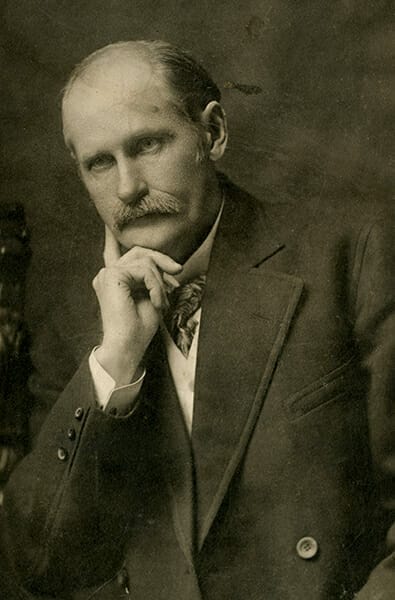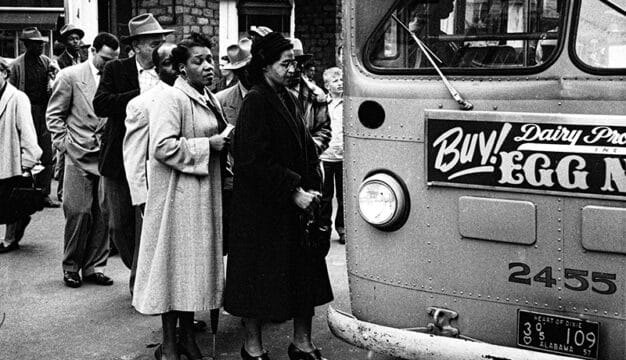John Trotwood Moore
John Trotwood Moore (1858-1929) enjoyed moderate success in the varied literary roles of novelist, historian, journalist, and magazine editor. Moore’s talents as a local color writer and humorist are founded in his rural background. His first 26 years were spent in Alabama and the remainder of his life in Tennessee.
 John Trotwood Moore
John Moore Jr. was born in Marion, Perry County, on August 26, 1858, the son of John and Emily Moore. He graduated from Howard College (later Samford University) in 1878. Like his father, Moore studied law and passed the Alabama State Bar exam; however, he never practiced. Instead, he pursued a publishing career, which began at the Howard College Magazine and continued for a short time while he was associate editor and then editor for the Marion Commonwealth.
John Trotwood Moore
John Moore Jr. was born in Marion, Perry County, on August 26, 1858, the son of John and Emily Moore. He graduated from Howard College (later Samford University) in 1878. Like his father, Moore studied law and passed the Alabama State Bar exam; however, he never practiced. Instead, he pursued a publishing career, which began at the Howard College Magazine and continued for a short time while he was associate editor and then editor for the Marion Commonwealth.
Moore probably first used the name “Trotwood” when he wrote for the Marion Commonwealth in an article signed “Betsy Trotwood,” a Charles Dickens character. Later, he used “Trotwood” as a pseudonym for many of his published writings. Although he tried to drop the name, his success was so intricately tied to it that he adopted Trotwood as his middle name instead.
After leaving the Commonwealth, Moore taught in Monterey, Butler County, before relocating to Pine Apple, Wilcox County, where he oversaw the establishment of Moore Academy in 1883. He also was principal and a teacher at the academy. In February 1885, he married Florence Allen, and at the end of the school year in 1885 the couple moved to Columbia, Tennessee. There, he took over farming his mother-in-law’s land and developed an interest in the Tennessee Pacer, a harness-racing horse breed. This newfound interest led to his next significant literary activity, authoring the “Pacing Department” column in Clark’s Horse Review. Initially factual and informative, it soon evolved into a forum for his fiction, poetry, and anecdotes. Two of Moore’s best-known stories or characters were introduced in the Review. “Old Wash,” an Uncle Remus-type of comical character, was introduced in a short story on March 14, 1893, and appeared repeatedly in Moore’s work throughout his career. His most famous racing story, “Old Mistis,” appeared in the Christmas 1894 issue; it tells the story of “Jake,” a “loyal” enslaved man typical of the Lost Cause romanticization of slavery.
In 1897, the year after his wife Florence died, Moore published Songs and Stories from Tennessee, a collection of pieces that had appeared earlier in the Review. This volume contained many of the “Old Wash” stories and “Old Mistis.” Moore married Mary Brown Daniel on June 13, 1900, and the couple would have three children: a son, Austin Merrill (who later became a poet, publishing under the name Merrill Moore), and a set of twins, Helen Lane and Mary Daniel Moore. Moore’s first novel, A Summer Hymnal, was published in 1901.
From 1905 to 1910, Moore published Trotwood’s Monthly and later Taylor-Trotwood Magazine, after a merger with Tennessee senator Robert Love Taylor’s magazine in 1906. Moore performed most of the writing and editorial duties, which resulted in numerous published works in various genres. Intended for rural America, the magazine contained farming information, historical facts and observations, and literary works and critiques. In this forum, Moore also introduced themes and characters that would appear in many of his later novels, including his best work, The Bishop of Cottontown (1906). The novel sold respectably, but it never became a critically significant work.
In 1911, Moore published Jack Ballington, Forester, a melodramatic romance that also addressed forest conservation, and then began focusing more specifically on the history of Tennessee, especially the life of Andrew Jackson. In 1919, he became State Librarian for Tennessee, a position he retained until his death. His best known work of this period, Hearts of Hickory: A Story of Andrew Jackson and the War of 1812, a historical novel, was published in 1926.
Ultimately however, Moore’s literary success was marginal. His work contains elements of both the sentimental romantic authors of the late nineteenth century and the more sophisticated modern realistic writers of the early twentieth century. Most critics have agreed that Moore’s focus on character development and neglect of plot directly affected his ability to write works that could be compared in success and importance to other works of the same period and genre. Additionally, his racist views, which are expressed either directly or indirectly throughout his writings, have diminished interest in his work as significant literature. As a local-color writer and humorist, however, Moore does compare favorably to some of the most successful of the time, such as Mary Noailles Murfree, Thomas Nelson Page, and Joel Chandler Harris. Moore died on May 10, 1929, in Nashville. He is interred at the city’s Mt. Olivet Cemetery.
Works by John Trotwood Moore
Songs and Stories from Tennessee (1897)
A Summer Hymnal: A Romance of Tennessee (1901)
The Bishop of Cottontown: A Story of the Southern Cotton Mills (1906)
Ole Mistis, and Other Songs and Stories from Tennessee (1909)
The Old Cotton Gin (1910)
Uncle Wash: His Stories (1910)
The Gift of the Grass: Being the Autobiography of a Famous Racing Horse (1911)
Jack Ballington, Forester (1911)
Hearts of Hickory: A Story of Andrew Jackson and the War of 1812 (1926)
Tom’s Last Forage (1926)
Additional Resources
Green, Claud B. John Trotwood Moore: Tennessee Man of Letters. Athens: University of Georgia Press, 1957.
Thweatt, John H. “The Archival Tradition in Tennessee: the Moore Years.” Tennessee Historical Quarterly 50 (Fall 1991): 152-156.
Warren, John W., and Adrian W. McClaren. “John Trotwood Moore.” In Tennessee Belles-Lettres: A Guide to Tennessee Literature. Morristown, Tenn.: Morrison Printing Co, 1977.



